
“A mother is she who can take
the place of all others
but whose place
no one else can take.”
Gaspard Mermillod
“Life” by Ludovico Einaudi, performed by Angèle Dubeau & La Pietà (courtesy of Analekta):
“Prelude” by Giovanni Marradi (courtesy of Andreea Petcu):
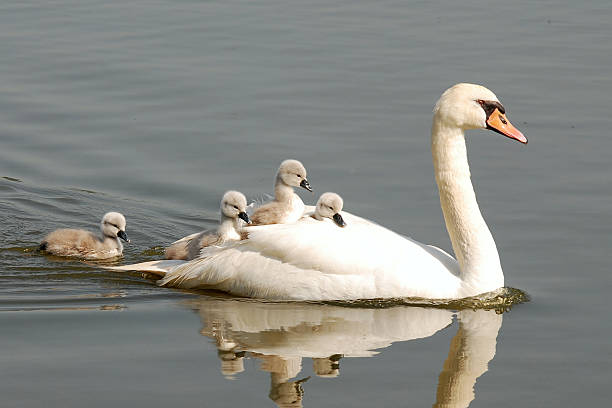
“The loveliest masterpiece of
the heart of God
is the heart of a mother.”
St. Therese of Lisieux
“Reverie” by Claude Debussy (courtesy of David Harris):

Courtesy of Jason Hawkes Aerial Photography:
In this post, I want to show a few official places which would be of interest to many but are never on the list of tourist companies. One of the most elegant is the residence of the Speaker of the Commons. In case one my readers is not quite sure to whom I am referring – it is the person, who when things get too heated among the MPs in the House of Commons, bangs his gavel and shouts: ‘Order! Order!’
Courtesy of The Times and The Sunday Times:
THE SPEAKER’S HOUSE AND LORD CHANCELLOR’S RESIDENCE
PALACE OF WESTMINSTER
SWIA OAA


The Speaker’s status had elevated over the last two centuries. This was reflected in the new residence, built after the 1834 fire. The new building was designed to ennoble the dignity of the office and enhance its status by providing the Speaker with a palace within a palace. Approached via a separate entrance in Speaker’s Court, flanked by panels carved with the Mace and national emblems in stained glass, a splendid ceremonial staircase leads to a magnificent suite of reception rooms.

At the time of rebuilding, it was stipulated that the style of its furnishings, fittings, and decorations would be in accordance with the best examples of the Tudor period. This was done very successfully. Lavish gilded coffered ceilings, panelling, stained-glass, floor tiles, elaborate Gothic chimneypieces, and widespread use of heraldry displaying the arms and armorial bearing of past Speakers combine to create a romantic evocation of the glories of the Speaker’s office.
Suite Bergamasque, L. 75 (Transcribed for Harp): IV. Passepied by Claude Debussy, performed by Xavier de Maistre:



The centrepiece of the entire enfilade of rooms is the State Bedroom. Until 1529 the Palace of Westminster was the principal royal residence, and the buildings played an important role in state ceremonials. It was customary for medieval monarchs to spend the night before their coronation in the palace. Although this practice had long fallen into disuse, a gorgeous state bed was provided, as a reference to past royal practice. Carved into the footboard are the royal arms, and its valance is embroidered with the emblems of the three kingdoms – the Thistle, the Tudor Rose, and the Shamrock. Because the Speaker’s House is in England, the Tudor Rose emblem is prominent on many features.
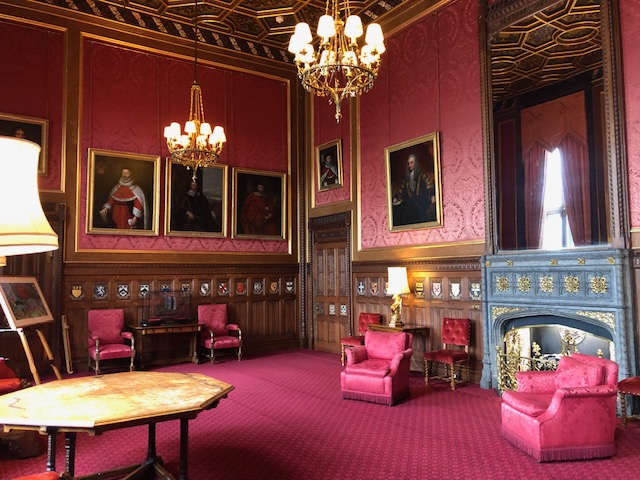
After the war and afterwards, such opulence became unfashionable among certain parts of the government. Unbelievably the State Bedroom was dismantled and sold off. It was rediscovered in a Welsh barn in 1985, purchased by the National Heritage Memorial Fund, and restored by the Victoria & Albert Museum. The bed and the bedroom were reconstructed, adjoining the Speaker’s Dining Room.

In the matching south pavilion is the Lord Chancellor’s residence with its superb River Room, restored in 1997-8, with dark green monogrammed Pugin wallpaper and a fine collection of loaned paintings and neo-classical sculpture.


Gymnopédie No. 3 by Erik Satie, performed by Sir James Galway and the London Symphony Orchestra:
10 DOWNING STREET
SWIA 2AA

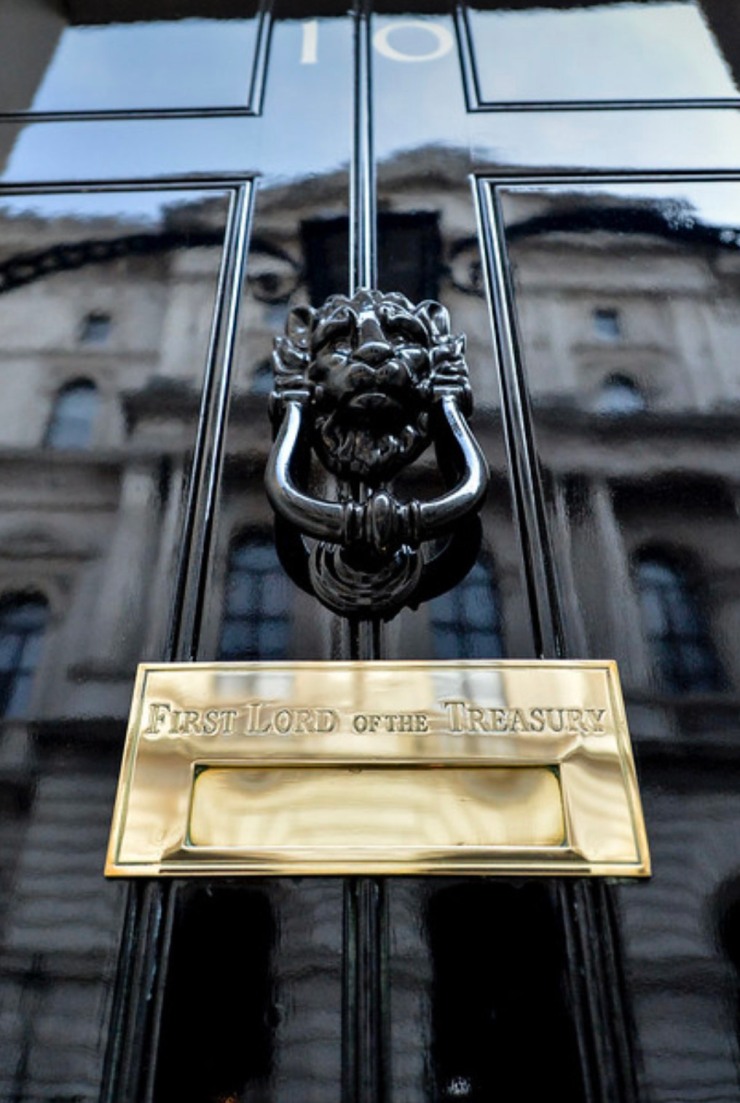
Between 1682 and 1684, the American-born Sir George Downing, political opportunist, profiteer, and spy, employed Sir Christopher Wren to design a cul-de-sac of two-storey town houses between Whitehall and St James’s Park. Forty years later it was described as ‘a pretty, open place especially at the upper end where there are four or five very large and well-built houses fit for persons of honour and quality.’ In 1732 King George II presented two houses to Sir Robert Walpole, the Prime Minister at the time, who would only accept them if they could be used as an official residence for future First Lords of the Treasury, the title which remains engraved on the brass letterbox of the famous door.

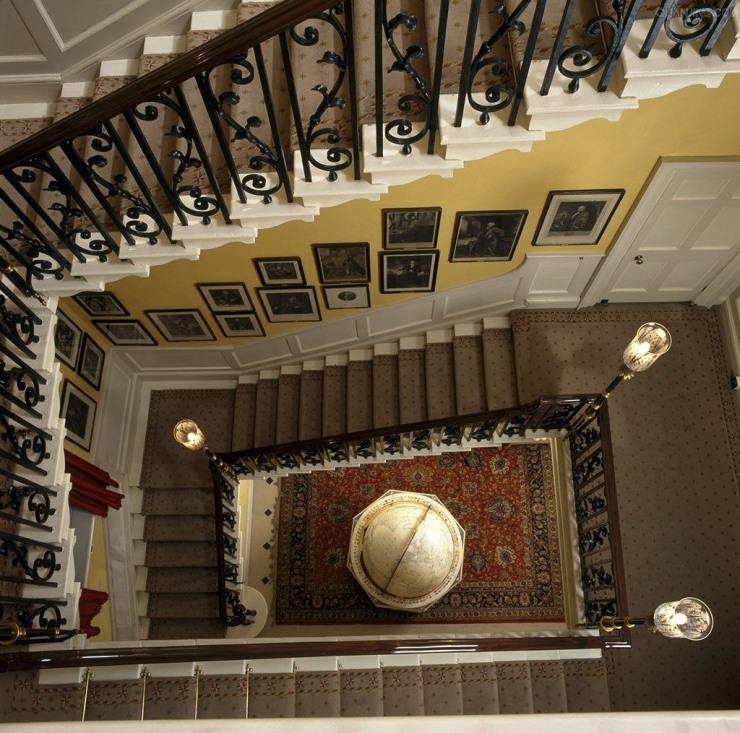
Over the next 250 years, the fortunes of Downing Street waxed and waned. Following an IRA mortar attack in 1991, the entrance door was replaced in replica in blast-proof steel. The splendid, three-sided staircase, its chrome yellow walls lined with black and white portraits of each prime minister, leads to three inter-linked rooms. The Pillared Hall, with a portrait of Elizabeth I over the fireplace, created in 1796 is used to receive guests. The Terracotta Room, once Walpole’s dining room, has plasterwork incorporating a straw-carrying “thatcher,” a tribute to the then Prime Minister, Mrs. Thatcher. The White Drawing Room has a fine series of paintings by Turner and a bronze of Florence Nightingale.

The State Dining Room, completed by John Soane in 1826, has his characteristic shallow, starfish vault and ceiling, but double-height, creating a spacious, dark panelled room for formal entertainment overseen by a massive portrait of George II. Deep in the basement, the two-storey vaulted Great Kitchen of 1732 remains.

No 10 is also the official residence of the cat of the Prime Minister of the United Kingdom, a post currently occupied by Larry. As a civil servant, the tenure of the Chief Mouser of the Cabinet Office runs with the office of Prime Minister, not the incumbent, which provides a reassuring sense of continuity. His predecessor, Wilberforce, saw off four prime ministers.
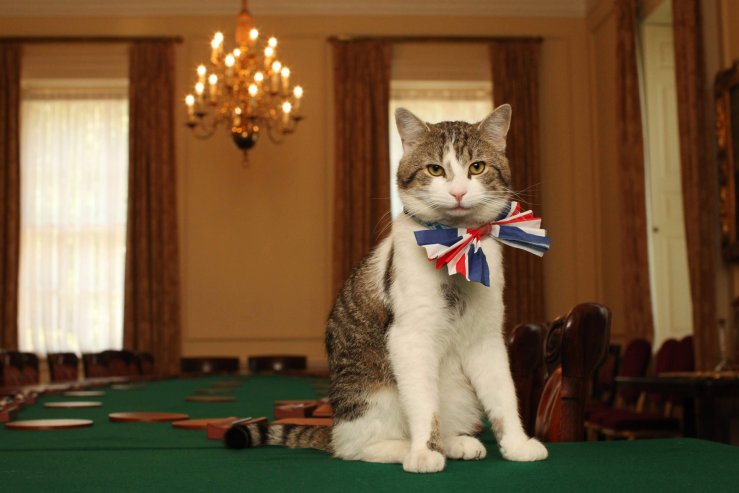
Courtesy of Inside Edition:
Courtesy of AFP News Agency:

Recently, a new member of the government arrived at No 10, a puppy called Dilyn. He was rescued from a farm, due to be put down because of his jaw deformity. This was corrected by a vet, and Dilyn now leads a happy life of luxury.

INSTITUTION OF CIVIL ENGINEERS
I Great George Street
SWIP JAA

The Institution of Civil Engineers was the world’s first professional engineering body. Although a small group of Civil Engineers was founded in 1771, it was not until 1818 that the present institution was established, at the Kendal Coffee House in Fleet Street. In 1839 the organisation moved to George Street. In 1910 a handsome new headquarters was created, the design conveying the confidence of the profession which was responsible for building Britain’s infrastructure throughout the 19th century, and this supreme self-assurance permeates the interior.

From the entrance hall, a grand Imperial staircase rises through to the first floor. A huge glass dome allows light to pour into the entire ground floor. On the landing is a moving bronze war memorial flanked by mourning female figures.
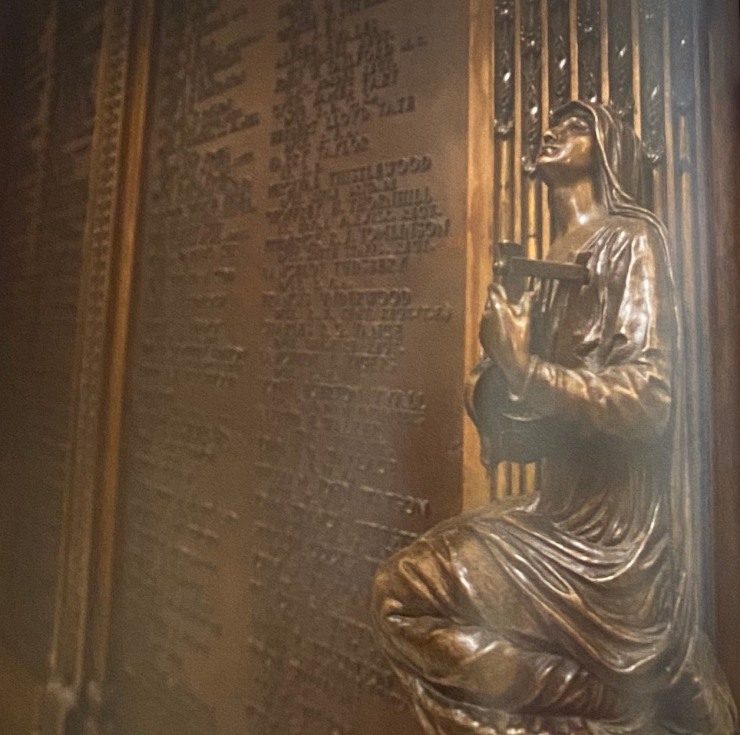

At ground floor level are suites of meeting rooms panelled in a late 17th-century style, stained glass, and engraved glass panels. In the library, the chimneypiece has carved consoles in the form of gigantic bearded heads.

The principal first-floor space is the Great Hall, a vast chamber lined with giant pilasters in the style of Louis XVI. At the centre of the ornate ceiling is a fascinating war memorial mural depicting an allegorical female figure swathed in the Union Jack with the background depicting a biplane and representatives of all the armed forces and services from the First World War, painted in 1920 by Charles Sims. He had been an official war artist, but the appalling scenes he witnessed, and the death of his son in 1914, induced insomnia, among other mental problems, culminating in his suicide by drowning in the River Tweed in 1928. Another victim of war. We now are determined not to repeat the mistakes of the past. Can we hope?


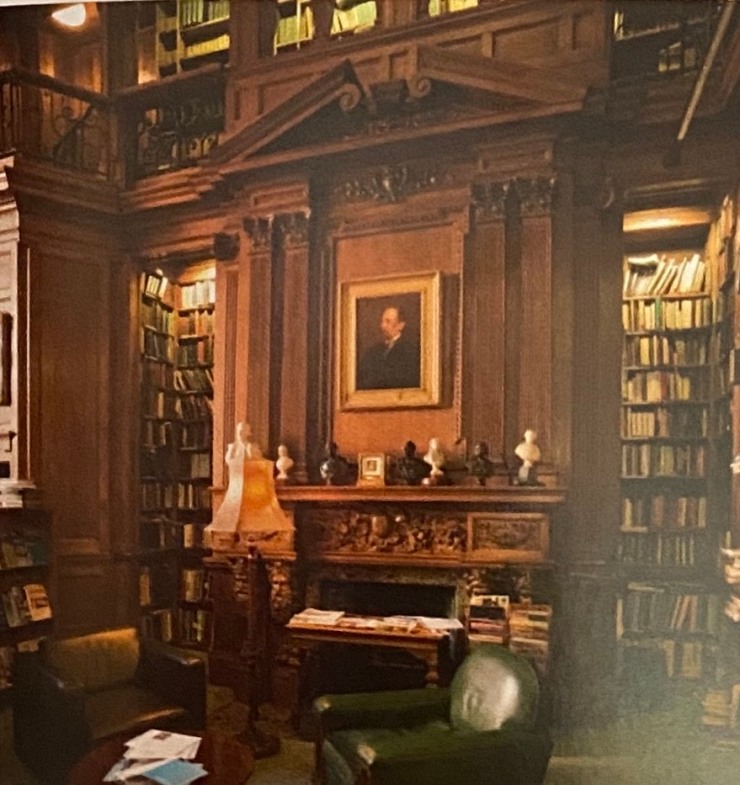

Courtesy of Institution of Civil Engineers:
ROYAL AUTOMOBILE CLUB
89 – 91 Pall Mall
SWIY 5HS

With its own rifle range, Turkish baths and spectacular indoor swimming pool resembling some exotic set from a Cecil B DeMille epic, the Royal Automobile Club was the last and grandest expression of the great age of of club building. Its flamboyant French facade in the style of Louis XIV is unlike any of the other gentlemen’s clubs, which took their architectural inspiration from Grecian antiquity, or the elegant palazzi of Rome and Venice.

The Automobile Club of Great Britain and Ireland was founded in 1897 by Frederick Richard Simms as “a Society of Encouragement for the motoring movement and the motor and allied industries in the British Empire.” The building was created by an army of French craftsmen, sculptors and blacksmiths who were brought across the Channel to impart an authentic Parisian quality to the entire building.

Inside is a vision of Edwardian opulence with massive top-lit oval vestibule in Louis XV style lined in French stuc and surrounded by a gallery at first floor level. Immediately beyond, overlooking the garden, is the former lounge (now a restaurant) decorated with a sky-painted ceiling and a stage and musicians’ gallery at opposing ends. The members’ dining room and the billiard room have elegant ceilings. The great smoking room runs from front to back with the coffered ceiling and entablature of gryphons.



In the basement, lit by torches, is the famous Byzantine swimming pool overlooked from a niche on the stairs by a fine bronze sculpture of a sea goddess. The swimming pool is lined with Sicilian marble and surrounded by massive Doric columns covered in shimmering blue and gold mosaics. During the war, Prince Olav of Norway, General Sikorski and General de Gaulle were all regulars.
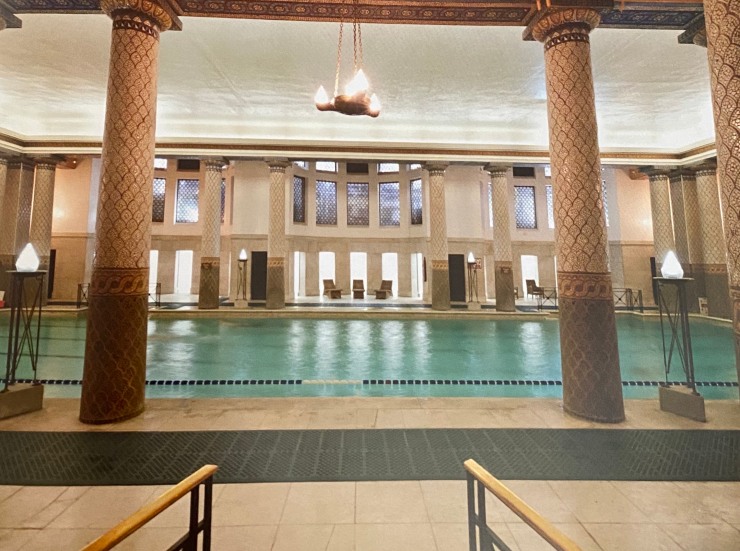
“Ave Maria (Méditation sur le Premier Prélude de Piano de S. Bach)” by Charles Gounod, performed by Rusanda Panfili:
MARLBOROUGH HOUSE
Pall Mall
SWIY 5HX
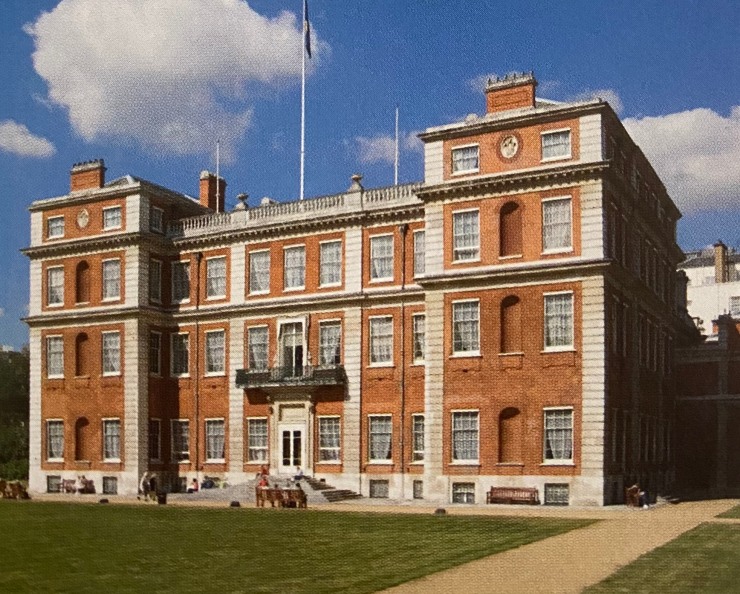

Currently the headquarters of the Commonwealth Secretariat, Marlborough House remains a royal palace, its last resident being Queen Mary, who is commemorated by a simple stone plaque on the garden wall facing The Mall.
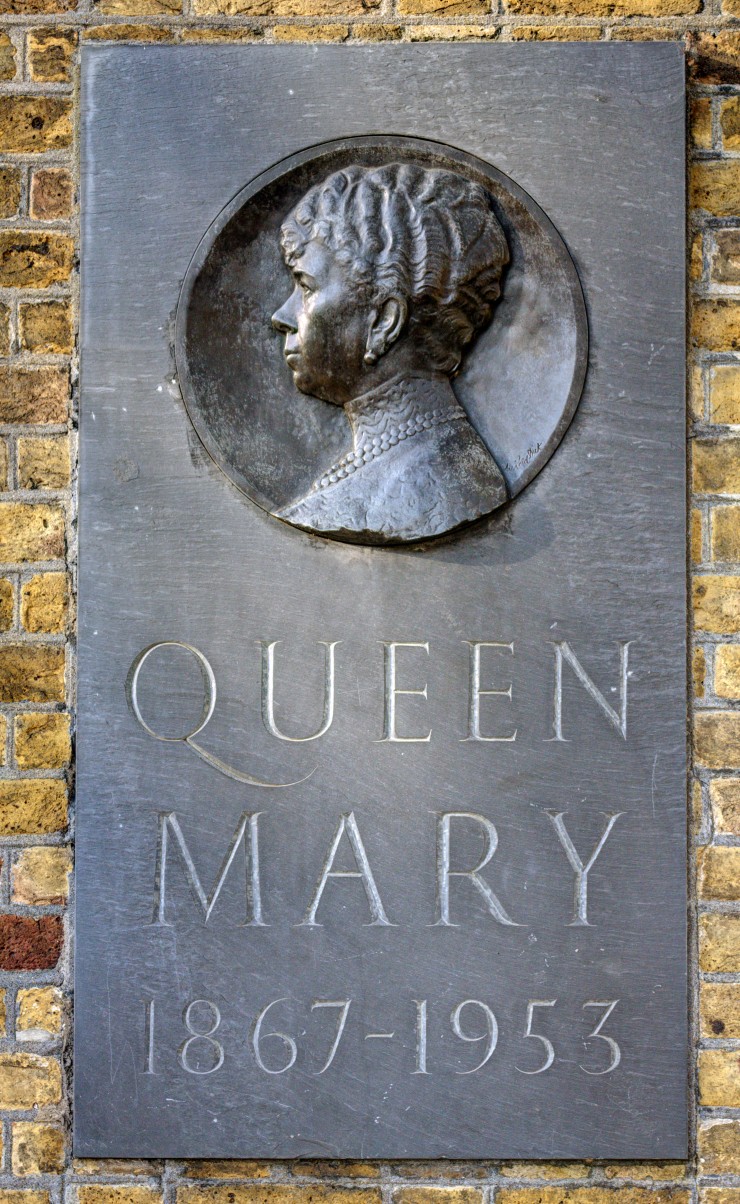
The house was built by Sarah Churchill, Duchess of Marlborough, in the garden of St James’s Palace. Designed by Christopher Wren and his son, it was described at the time as ‘in every way answerable to the grandeur of its master.’ Approached by a broad flight of steps, and faced in red Dutch bricks, originally it compromised two tall storeys with a crowning stone cornice and balustrade over a basement.


In 1817, the Crown reacquired the property, and from 1853 to 1861 it was used as the National Art Training School, the forerunner of the Royal College of Art. The future King George V was born here in 1865. In the garden is Queen Alexandra’s poignant pet cemetery, and Queen Mary’s thatched revolving summer house.

The great glory of Marlborough House is its lavish interior, which reflects the changing fashions of each period of its use. The main entrance leads to a double height cube – the Saloon around which runs a balcony, over which are paintings of the Battle of Blenheim. On the ceiling above is a cupola surrounded by paintings moved here in 1711 from the Queen’s House in Greenwich. They depict Peace, surrounded by the Liberal Arts and Virtues. Below are tapestries. To the west and east of the Saloon are two grand staircases with huge murals illustrating famous battles.


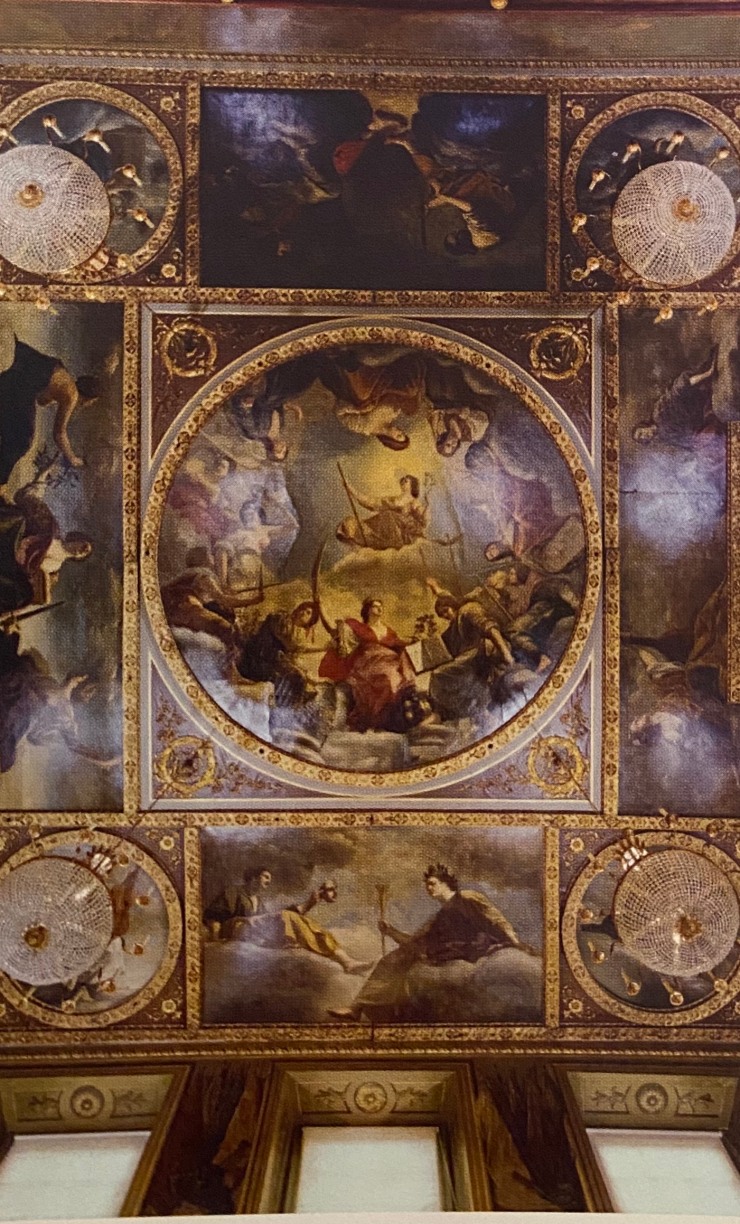


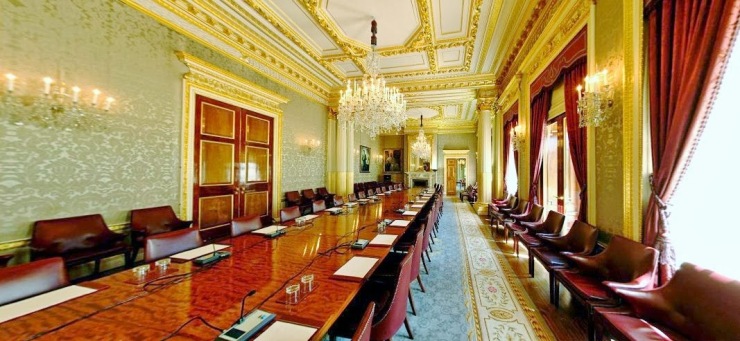
Above is one of the meeting rooms for Commonwealth events
The primary interest of the interior is the mural paintings which celebrate one of Britain’s greatest military commanders in his original London house, together with the historical associations with the Royal Court. Outside on the boundary wall to Marlborough Road is a profoundly moving bronze masterpiece, the Queen Alexandra Memorial.

Courtesy of Wonders of London:
See you next week for more unusual places!
As it will be Mothering Sunday this weekend, in honour and recognition of all mothers:
“For mothers are the first educators, the first mentors; and truly it is the mothers who determine the happiness, the future greatness, the courteous ways and learning and judgement, the understanding and the faith of their little ones.” Ba’hai faith
“Mama” by Andre Rieu (courtesy of dariusz gawryszek):
“Lullaby (Song of the Sandman)” by Enya (courtesy of hetorakelt):

Of course. Keep up the good work
LikeLike
Thank you, you are kind!
LikeLike
I don’t have time to watch every vid. The pics are gorgeous.
You sure put a lot into this post! Thank you!
LikeLike
Thank you, Resa, for your kind comments, Greatly appreciated.
Joanna
LikeLiked by 1 person
Joanna,
A prefacing comment: I am following this blog in late June and (until the end) didn’t appreciate that it was posted just before Mother’s Day. Before I was aware of the timing I wrote:
As this post begins it might have been subtitled “mothers”. The impact on their children is like no other. What a pleasant way to start my day. That theme image of a hen Black Duck and her brood of six, set off by the solitary white feather adrift in the water, is perfect. You have done a masterful job of weaving the motherhood theme throughout this post.
I always enjoy your selection of classical music. Debussy’s Reverie accompanied by images of Monet’s Impressionist paintings made me wonder if these two “Claude’s” from Paris collaborated with each other during their lifetimes. The music and paintings are certainly very complimentary when you put them together in this way – often with female images who might have been mothers.
I will say that I am more inclined to the pastoral side of life so political figures and most buildings don’t rate as high on the scale. Still, politicians and architects must have been influenced by mothers as they traveled a path toward their careers. Need I say, the videos of Larry made a bigger impression – and his residence has outlasted that of several Prime Ministers.
And what is Ave Maria if not the most beautiful musical composition about the best known of all mothers – and played so eloquently by Rusanda Panfili.
Now I get it: Queen Mothers, “Mama” by Andre Rieu and finally “Lullaby”.
Truly, your genius shines through in the composition of this blog post. Thank you for a delightful two hours! Stewart
LikeLike
A big thank you and apology for being late, Stewart, I had massive legal work to fulfill and for the first time since starting my blog, I didn’t publish my post. Luckily, it looks as if tonight all will be back to normal. Your comments, Stewart, are wonderful, and I cannot thank you enough!
Thank you, Stewart, again, and my appreciation for your overwhelming kindness.
Joanna
LikeLike